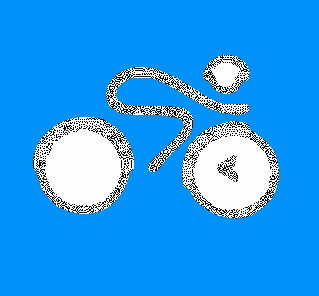| Newsletter - 2003 Archive |

|

|
Cycling Club |

|

|
| Newsletter - 2003 Archive |

|

|
Cycling Club |

|

|
Next--->
Reprinted with permission from the December 7th issue of "CYCLING WEEKLY". Crank length is one aspect of bike setup that seems largely overlooked and I thought it worthwhile to ask CW's Editor's permission to re-produce it in "BC Randonneur".
Crank length (CL) is the hardy perennial of cycling-related topics. Unlike saddle height, which can be adjusted to your preference, and concerning which there are several comprehensible - if not quite concordant- theories, CL is for all practical purposes fixed.
Adjustment is only possible by replacing one pair (of cranks) with another, at considerable expense and inconvenience. Again, where most cyclists will have experimented to a great or lesser extent with saddle height, only a few will have tried more than a couple of crank lengths, then usually by accident, and rarely in an attempt to find an optimal length The first theory to consider is the idea that CL should somehow correspond to that of the leg or thigh. Lance Armsrong at well under 1.8 m tall (5ft 9in), rides 175 mm cranks, while the lankier Mario Cipollini (6' 2"?) favours 172.5s.
A cyclist with a 760mm (30 in) inside leg riding 170s would, if leg and crank length scaled up by 10%, correspond with a cyclist with an 836mm (33 in) inside leg on 187mm cranks, which are hard to find.
The second is the notion that longer cranks generate more power. Sure, the same pedal pressure applied at the end of a longer crank generates more torque, or turning force, but pedal power is measured by multiplying torque by cadence. If you can press just as hard and fast on 5% longer cranks, your power output will be up by the same amount. Chances are, however, that you'll turn the longer crank arms more slowly or gently and end up producing the same power - or even less.
Lastly, bear in mind that CL is only truly important when riding on the limit of performance, which itself varies according to duration of effort. If you are tapping along at 90% of your best effort for any distance, CL is not limiting how fast you go.
Even when riding at full chat, CL's relevance is largely down to the limit it puts on cadence. Pedal speed is vital when racing because the higher the power output, the higher the cadence required. While the force a rider can apply to the pedals, and hence torque, diminishes as cadence rises, power-torque x cadence- increases up to about 160 rpm before falling away again. Naturally, the higher the power output, the shorter the duration for which it can be sustained, sprinters pedal faster than kilo riders, who pedal faster than pursuiters. Excepting the rides by Jacques Anquetil and Graham Obree, the hour record has always been set riding at a cadence of just over 100 rpm.
Why don't all racing cyclists pedal as fast as possible? Traditional training rollers generate minimal resistance, yet they make for very hard work at high cadence. Very little power is being produced "at the back wheel", but a lot of work is being done, and it is being done to overcome the internal resistance of joints and muscles, obviously by the muscles themselves. The "internal work" is proportional to cadence, and at high revs a large amount of effort is expended without contributing to propulsion.
There is an argument that longer cranks are better for low-intensity riding, the unfit cyclist and for long climbs, since they allow a lower cadence at any given power output and reduce unwanted internal work. Cranks between 170 and 175 mm are comfortable for most people, regardless of leg length, at cadences of around 80 rpm and upwards. So, choose the longest cranks you can turn comfortably at your preferred cadence. Unless, like Armstrong you can learn to twirl 175 s at 120 rpm.
I highlighted the bit about "performance varies with duration of effort" with PBP 2003 in mind. While randonneuring is seldom about maximum output the relationships between leg length, CL, condition of knees, weather and time on the road become quite critical over the 48-90 hour span of an event such as PBP.
Growing up in "Imperial" England, I was used to the standard 6.5 inch long crank (165.1mm) and also used 6.75 in (171.45 mm) & 7in (177.8 mm). Since getting used to European and Japanese stuff I have used the standard 170 mm, 171 mm (Sugino), 172.5 mm (favourite) & 175 mm. On fixed wheel the 165 mm cranks were a definite aid when spinning (9 tailwind miles in 20 minutes on 48x16! = about 115 rpm).
_